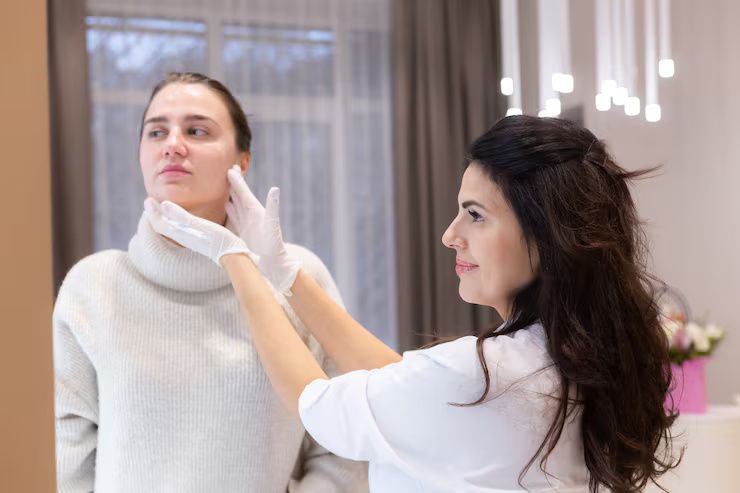A rejuvenation facial is a non-invasive skincare treatment aimed at restoring skin’s vitality, smoothness, and glow. These facials combine exfoliation, deep cleansing, hydration, and sometimes light therapy or microcurrents to improve overall skin health.
They cater to common concerns such as dullness, fine lines, uneven skin tone, and clogged pores. As people become more aware of skin health and non-surgical options, rejuvenation facials have become a key offering in spas, dermatology clinics, and aesthetic centers.

Importance – Why rejuvenation facials matter in modern skincare
Today’s busy lifestyle, increasing pollution, digital screen exposure, and stress levels significantly impact skin appearance. Rejuvenation facials offer a preventive and corrective approach to help:
-
Boost collagen production for firmer skin
-
Reduce early signs of aging like fine lines and wrinkles
-
Improve blood circulation, delivering oxygen and nutrients
-
Deep-clean pores and remove dead skin
-
Hydrate and revitalize tired skin
These facials are suitable for both men and women, especially those over 25 who are beginning to see early signs of aging or want to maintain skin health without harsh procedures.
Recent Updates – Trends and developments in facial rejuvenation (2024–2025)
The beauty and wellness industry has seen several advancements in facial rejuvenation:
-
LED Light Therapy: Clinics now commonly offer red and blue light therapy to stimulate collagen and reduce acne inflammation.
-
HydraFacial upgrades: The popular HydraFacial now includes booster serums with peptides and antioxidants tailored to individual skin types.
-
Cryo Facials: Cooling therapy to tighten pores and reduce puffiness is gaining popularity, especially in luxury spas.
-
AI-driven skin analysis: Tools like Skin360 and YouCam analyze skin health to recommend customized treatments.
-
Organic skincare focus: Many salons now offer rejuvenation using herbal, cruelty-free, or paraben-free product lines.
These innovations aim to personalize facial treatments, ensuring better safety and visible results.
Laws or Policies – Safety standards and regulations affecting facial treatments
Rejuvenation facials are generally non-medical procedures, but depending on the country, they may be regulated to ensure safety:
-
India: Estheticians must operate under licenses governed by the State Medical Council or beauty therapy boards. Medical-grade facials (using lasers, microdermabrasion, or chemical peels) must be performed by licensed dermatologists.
-
USA: The FDA regulates certain devices (like LED or microcurrent machines). Spas must adhere to hygiene standards under state cosmetology laws.
-
EU countries: The EU Cosmetic Products Regulation (EC 1223/2009) governs product use, labeling, and allowable active ingredients in facial treatments.
-
Australia & Canada: Treatments involving injectables or deep peels require oversight by certified professionals.
It's always advisable for clients to check practitioner qualifications and hygiene certifications before undergoing a facial.
Tools and Resources – Apps, websites, and tools to help understand and plan rejuvenation facials
Here are several helpful tools and platforms for consumers interested in rejuvenation facials:
Mobile Apps
-
YouCam Makeup – AI-driven skin analysis with routine tracking.
-
Troveskin – Tracks facial improvements and recommends skincare actions.
-
TroveWell – Offers beauty provider comparisons and booking options.
Online Platforms
-
Skin Deep by EWG – Database of safe skincare ingredients.
-
RealSelf – User reviews of facial rejuvenation and cosmetic treatments.
-
Zocdoc – Book appointments with certified dermatologists or estheticians.
Planning Tools
-
Skin care tracking templates
-
Post-facial care PDF guides from clinics
-
Routine planners via Notion or Canva
FAQs – Common questions about rejuvenation facials
Q1. How often should I get a rejuvenation facial?
For maintenance, once every 4–6 weeks is recommended. If targeting specific issues (like acne or hyperpigmentation), your skincare professional may suggest more frequent sessions initially.
Q2. Are rejuvenation facials suitable for sensitive skin?
Yes, but it’s important to inform your provider about sensitivities or allergies. Many spas offer gentle, fragrance-free, and hypoallergenic options.
Q3. What’s the difference between a regular facial and a rejuvenation facial?
While regular facials focus on cleansing and hydration, rejuvenation facials incorporate advanced methods like LED light, enzyme peels, or collagen boosters aimed at reversing aging signs.
Q4. Are results from a rejuvenation facial permanent?
No, they are temporary but cumulative. Regular sessions, paired with proper home skincare, provide sustained benefits.
Q5. Can I wear makeup after a rejuvenation facial?
It’s best to avoid makeup for at least 24 hours to allow the skin to breathe and absorb nutrients. Always apply sunscreen after any facial treatment.
Final thoughts
Rejuvenation facials are more than a beauty ritual—they’re a part of holistic skin wellness. By combining expert techniques with modern technologies, they offer an accessible way to delay aging, improve skin texture, and promote confidence.
Before choosing a provider, look into hygiene, product transparency, and licensing. With the right care, a rejuvenation facial can be a relaxing and beneficial step toward healthier skin.